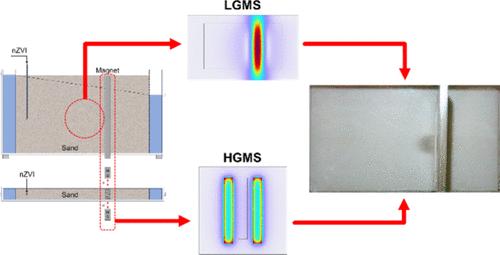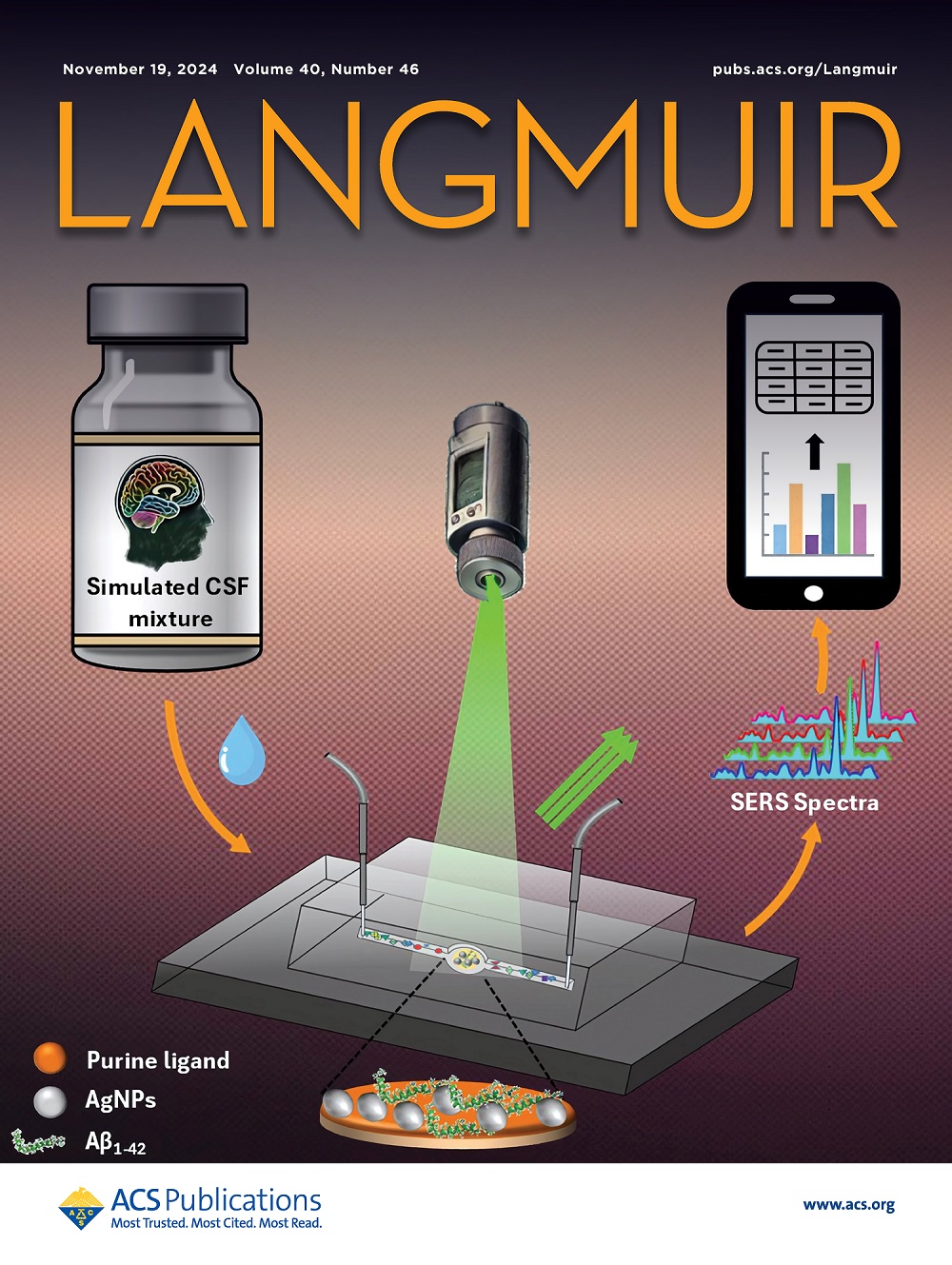Magnetic Capture of Functionalized Nanoscale Zerovalent Iron for Soil Remediation: A Feasibility Study on Transport Control
IF 3.7
2区 化学
Q2 CHEMISTRY, MULTIDISCIPLINARY
引用次数: 0
Abstract
Nanoscale zerovalent iron (nZVI) has been proposed as a promising nanomaterial for soil remediation. However, injecting nZVI into contaminated sites to target and treat pollutant sources may pose potential environmental risks due to its colloidal stability and mobility in the environment. In this regard, this study assessed the feasibility of implementing magnetic capture of surface-functionalized nZVI in soil environments under the influence of the convective flow current. Here, functionalized nZVI particles were prepared by introducing carboxymethyl cellulose (CMC) as a stabilizing agent during the synthesis of nZVI by using the liquid-phase reduction method. The functionalized nZVI particles were then injected into a two-dimensional flow column containing a sand matrix with a high gradient magnetic trap (HGMT) embedded within the system. Particle transports in both the absence and presence of a magnetic field were recorded by using a digital camera, and the breakthrough curves were generated from the data collected spectrophotometrically. The results showed that the relative breakthrough concentration of nZVI decreased from 0.92 to nearly zero, with a delayed breakthrough time as the applied magnetic field strength increased from zero (no magnetic field) to 0.093 T, demonstrating a 100% capture efficiency. It was found that the magnetic capture for the nZVI particles was contributed by two mechanisms: (1) low gradient magnetic separation (LGMS), driven by the penetrating magnetic field from the permanent magnets, and (2) high gradient magnetic separation (HGMS), which occurred near the wire surfaces within the HGMT section magnetized by the permanent magnets. Findings in this work have proven the feasibility of magnetic separation as a control strategy for nanoparticle applications in environmental remediation.

求助全文
约1分钟内获得全文
求助全文
来源期刊

Langmuir
化学-材料科学:综合
CiteScore
6.50
自引率
10.30%
发文量
1464
审稿时长
2.1 months
期刊介绍:
Langmuir is an interdisciplinary journal publishing articles in the following subject categories:
Colloids: surfactants and self-assembly, dispersions, emulsions, foams
Interfaces: adsorption, reactions, films, forces
Biological Interfaces: biocolloids, biomolecular and biomimetic materials
Materials: nano- and mesostructured materials, polymers, gels, liquid crystals
Electrochemistry: interfacial charge transfer, charge transport, electrocatalysis, electrokinetic phenomena, bioelectrochemistry
Devices and Applications: sensors, fluidics, patterning, catalysis, photonic crystals
However, when high-impact, original work is submitted that does not fit within the above categories, decisions to accept or decline such papers will be based on one criteria: What Would Irving Do?
Langmuir ranks #2 in citations out of 136 journals in the category of Physical Chemistry with 113,157 total citations. The journal received an Impact Factor of 4.384*.
This journal is also indexed in the categories of Materials Science (ranked #1) and Multidisciplinary Chemistry (ranked #5).
 求助内容:
求助内容: 应助结果提醒方式:
应助结果提醒方式:


